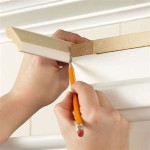Essential Aspects of Identifying Little Black Bugs in Kitchen Cupboards
The presence of little black bugs in kitchen cupboards can be a nuisance and a concern for homeowners. Understanding the essential aspects of these insects is crucial for effective identification and control. This article will delve into the key factors to consider when dealing with little black bugs in kitchen cupboards, providing a comprehensive overview of their characteristics, habits, and potential health implications.
Characteristics:
Little black bugs found in kitchen cupboards are typically beetles belonging to various species. They are usually small, ranging from 1 to 6 mm in length, with a dark brown or black coloration. These beetles often have a flattened or oval body shape with smooth or slightly textured elytra (hardened forewings). Some common species include the flour beetle, rice weevil, and cigarette beetle.
Habits:
Little black bugs infest kitchen cupboards in search of food and shelter. They are attracted to stored grains, cereals, flour, and other dry goods. These insects typically feed on these products, contaminating them with their excrement and eggs. The larvae of these beetles can also damage stored products by burrowing through packaging and consuming the contents.
Health Implications:
While little black bugs in kitchen cupboards are generally not known to transmit diseases, they can still pose health hazards. Their presence can indicate poor sanitation and hygiene, which can attract other pests and bacteria. Consuming stored products contaminated with insect feces or excretions can cause allergic reactions, respiratory problems, or gastrointestinal issues in some individuals.
Identification and Control:
Correctly identifying little black bugs in kitchen cupboards is crucial for effective control measures. Visual inspection of storage areas and infested products can assist in identifying the specific species. To control these pests, it is essential to locate and eliminate their food sources by thoroughly cleaning cupboards and discarding infested products. Vacuuming can help remove adult beetles and eggs, while traps can monitor and reduce populations. Additionally, using airtight containers for dry goods can prevent future infestations.
Conclusion:
Little black bugs in kitchen cupboards are a common household problem that requires prompt attention to prevent contamination and health hazards. Understanding the essential aspects of these insects, such as their characteristics, habits, health implications, and control measures, is vital for effective pest management. This article provides a comprehensive overview of these factors, enabling homeowners to take appropriate steps to identify and eliminate these pests from their kitchen cupboards.

14 Types Of Kitchen Bugs With Pictures Identification Guide

6 Tiny Black Bugs In Kitchen Cupboards

6 Tiny Black Bugs In Kitchen Cupboards

Tiny Black Bugs In The Kitchen Brown Pantry

6 Tiny Black Bugs In Kitchen Cupboards

How To Get Rid Of The Most Common Pantry Pests

Tiny Bugs Black Brown In Kitchen Cabinets Countertops

Tiny Black Bugs In Kitchen 10 Ways To Eliminate Them

Natureplus Tiny Black Beetles Everywhere What Are They

Pantry Bugs How To Deal With A Pest Infestation In Your Kitchen Fsg Au
Related Posts








